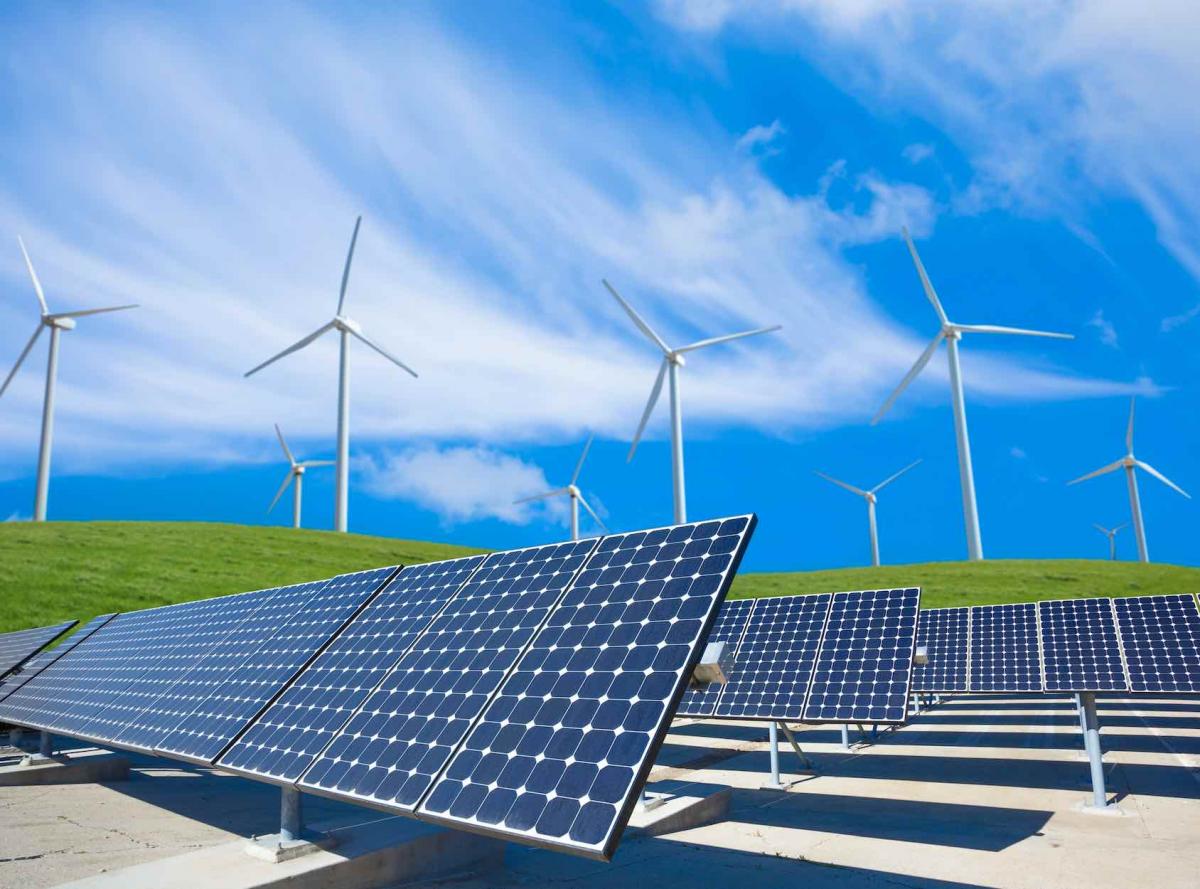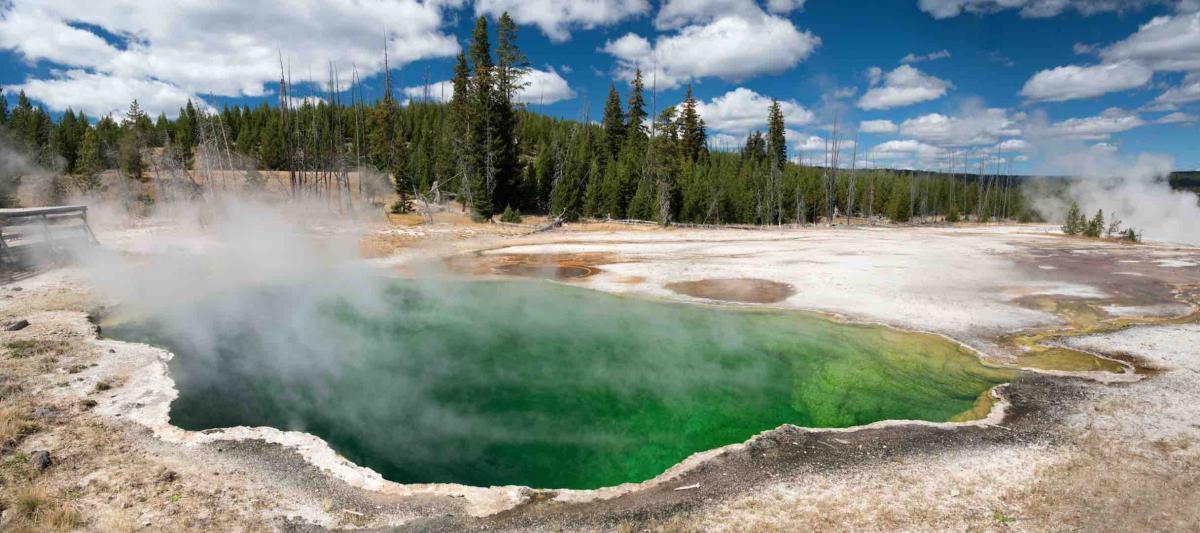Energy, Water and the Responsibilities of Stewardship
California’s landscape encompasses snowy mountain ranges, deserts, sunny beaches, dramatic rocky coastline, redwood forests and more. This remarkably diverse beauty plays a central role in attracting people and businesses to the Golden State.
The health and vitality of the environment directly affect our quality of life, and energy production is a key factor both in the state’s economy and its environmental quality. It’s essential to derive as much energy as possible from clean sources as part of our efforts to maintain a healthy environment with clean air and water. And water quality and supply reliability also play a central role in our state’s economy and must be considered as we move toward a more sustainable future.
As local officials, pursuing clean renewable sources of energy and conserving water are essential components of our stewardship of public resources and the environment. Regional efforts addressing climate change and greenhouse gas emissions are underway throughout California, and cities are participating in collaborative, coordinated projects and programs to increase energy efficiency and conserve resources.
The League provides innovative programs, such as the Beacon Program, to support this work (see “Beacon Program Helps Cities Lead the Way to a More Sustainable State”).
Advances in Energy and Water Conservation
Over the past 15 years, cities of all sizes in California have made great strides in conserving energy and reducing greenhouse gas emissions by:
- Implementing energy efficiency measures in municipal facilities;
- Adopting new technologies, such as anaerobic digestion that converts waste into energy; and
- Replacing diesel and gasoline fleets with vehicles powered by electricity and compressed natural gas.
Water is another crucial resource essential to thriving communities and businesses. During the recent six-year drought, California cities and their residents employed a variety of innovative ways to conserve water and augment the water supply. Even though the drought abated in early 2018, water supply remains a concern for communities statewide. Cities need reliable sources of water for current uses, and adequate supplies are essential to meet the growing needs of an increasing population.
Some of the water conservation efforts adopted by cities and residents during the drought continue to provide benefits. For example, the use of gray water and recycled water offer additional sources of savings. Gray water is untreated, nondisinfected wastewater that has not come into contact with toilet waste. It includes wastewater from residential showers, bathtubs, bathroom sinks and washing machines. Gray water can be used to irrigate landscapes, using an on-site collection system, and it must employ a subsurface irrigation method. In many households, gray water can comprise as much as 80 percent of the total wastewater generated. If all of that water can be beneficially used for irrigation, significant water savings can be achieved.
Recycled water is highly treated wastewater from various sources such as domestic sewage, industrial wastewater and stormwater runoff. Most recycled water treatment plants produce tertiary treated water, meaning the water has been through three levels of treatment including filtration and disinfection. Tertiary treated recycled water can be used for landscape, agricultural irrigation, car washing, fish ponds, firefighting, groundwater recharge and in fountains and recreational lakes where swimming is allowed. Recycled water is cleaner and has fewer restrictions on its use than gray water; it does not require an on-site collection system and is delivered through a separate plumbing system. Most recycled water is applied by drip irrigation or conventional sprinkler irrigation.
By law, all pipes and equipment conveying recycled water must be purple or have purple markings as a universal indicator to prevent cross connection with potable supplies.
Rainwater capture is another useful strategy for water conservation. The League supported Proposition 72 of 2018, a constitutional amendment to exclude rainwater capture systems added to properties after Jan. 1, 2019, from triggering a property tax reassessment. Rainwater capture systems are designed to capture, retain and store rainwater flowing off rooftops or other manmade above-ground hard surfaces for on-site use. Prop. 72 would exclude rainwater capture systems from the definition of new construction so the taxable value of a property would not increase simply because the property owner added a rainwater capture system. An overwhelming majority of voters passed Prop. 72 in June.
Ongoing Energy Challenges for the World’s Fifth-Largest Economy
The California Independent System Operator (ISO) recently issued a warning that the state is facing tight power supplies, with a 50 percent chance that the ISO will have to declare a Stage 2 emergency this summer for the first time since 2007. This is due in part to a drier winter that is reducing available hydroelectric power. In addition, the ISO advises that an insufficient supply of natural gas due to limited storage capacity and pipeline outages could add to the summer reliability concerns in Southern California.
This situation underscores the need for diverse sources of clean and renewable energy to power our state — now ranked as the world’s fifth-largest economy.
California’s Unique Mix of Renewable Power Resources
California’s climate and geographic diversity provide excellent conditions for tapping several clean sources of power, including solar, wind, geothermal and wave.
Solar Power: Benefits and Challenges
Solar power offers an excellent example of a resource with both advantages and challenges for California cities. Municipal facilities throughout the state have used solar power for many years and realized significant savings and reductions in greenhouse gas emissions. Residences and commercial enterprises are also using solar power to reduce energy costs.
Although solar power has been immensely beneficial for cities, industry and residents, these advances are tempered by policy pressure from the state to push the commercial market to provide more clean energy. For example, in a move designed to cut energy use in new homes by more than 50 percent, the California Energy Commission adopted building standards in early May 2018 that require solar photovoltaic systems on new homes starting in 2020. While such a policy undeniably benefits all Californians in the long run, in the short term it drives up the cost of buying a home at a time when communities statewide are struggling to get more affordable housing built.
Capturing Wind Power
Technological advances have made wind energy a cost-competitive and grid-friendly source of electricity. Commercial-scale wind projects generated about 7 percent of the state’s gross system power in 2016. In addition, hundreds of homes and farms use smaller wind turbines to produce electricity.
According to the Electric Power Research Institute, the cost of producing wind energy has decreased nearly fourfold since 1980. The California Energy Commission reports that wind energy is now the nation’s fourth-largest source of electric capacity, behind natural gas, coal and nuclear energy.
Kern, Solano and Riverside counties lead the state in wind production. The majority of wind turbines are located in six regions: Altamont, East San Diego County, Pacheco, Solano, San Gorgonio and Tehachapi.
Geothermal Power Runs 43 Power Plants in California
The Earth’s heat produces geothermal energy, which is often associated with volcanic or seismically active regions. California contains the largest amount of geothermal electric generation capacity in the United States, because of its location on the Pacific “Ring of Fire” and tectonic plate conjunctions.
The largest concentration of geothermal plants is located north of San Francisco in the Geysers Geothermal Resource Area in Lake and Sonoma counties. This location has been producing electricity since the 1960s. Other major geothermal electrical production locations in California include the Salton Sea area in Imperial County, the Coso Hot Springs area in Inyo County and the Mammoth Lakes area in Mono County.
In 2017, geothermal energy produced 5.84 percent of the state’s total system power. A total of 43 geothermal power plants operate in California with a capacity of 2,694 megawatts. Experts estimate that the state has the potential for more than 4,000 megawatts of additional power from geothermal energy, using current technologies.
Wave Power: An Emerging Industry
Wave power proponents are looking at the most effective ways to generate electricity from the sea on a scale that makes economic sense. This energy source has tremendous potential. Experts point out that while every square meter of a solar panel receives 0.2 to 0.3 kilowatts of solar energy and every square meter of a wind tower absorbs 2 to 3 kilowatts, every meter of the California coast receives 30 kilowatts of wave energy.
The latest research suggests that wave energy in the United States could produce up to 1,170 terawatt-hours a year — nearly one-third of the nation’s total electricity.
Join the Beacon Program
The Institute for Local Government, the League’s nonprofit research affiliate, launched the innovative Beacon Program in 2010 to support and recognize the valuable sustainability work of local governments. More than 130 cities and counties currently benefit from the program.
If your city is not already participating in the Beacon Program, I encourage you to consider doing so. The Beacon Program (www.ca-ilg.org/beacon-program) provides a framework for local governments to share best practices that create healthier, more vibrant and sustainable communities. The program honors voluntary efforts by local governments to reduce greenhouse gas emissions, save energy and adopt policies that promote sustainability. The Beacon Program offers valuable tools that help cities of all sizes quantify their efforts to address climate change.
A tremendous amount of innovative work around energy and water is underway in our state, and the end result is greater choice for cities, businesses and residents. Such innovation benefits all of us, particularly at a time when many cities are working hard and doing their best to provide essential services for residents despite severe fiscal challenges.
California possesses great natural beauty and tremendous resources, both in its unique natural resource assets and the creativity of its people. We owe it to ourselves and future generations to protect and nurture these resources. As cities, we must address these issues and utilize every available asset in this effort to provide clean energy and conserve water as part of protecting our environment and the quality of life for all Californians.
Cities are implementing creative efforts to promote sustainability and incorporate its principles into municipal programs and activities at every level. This innovation is one of our greatest assets. As we move ahead, let’s build on that momentum and continue leading the way to a more sustainable future.
Technological Advances Change the Playing Field
When examining emerging technologies, it’s helpful to reflect on the pace of technological change and its impact. Just two decades ago, widespread use of electric vehicles (EVs) seemed a remote possibility with limited feasibility, but now EVs and charging stations are a common sight on our streets. (California cities were early adopters of EV fleets, and Western City first covered this trend in July 2000.)
The next wave in zero-emissions transportation is hydrogen fuel cell vehicles, which combine hydrogen and oxygen to produce electricity that runs a motor. Because they’re powered entirely by electricity, hydrogen fuel cell vehicles are considered electric vehicles — but unlike other EVs, their range and refueling processes are comparable to conventional cars and trucks. Hydrogen fuel cell cars can be filled in three to five minutes; EVs typically require several hours to fully recharge even under optimal conditions. And while EV range is improving continually, most EVs on the road today can’t match the range of hydrogen fuel cell vehicles that easily travel over 300 miles on a single tank.
As technology brings cleaner ways to run cars and other vehicles, it also drives a commensurate improvement in air quality and reduced greenhouse gas emissions.
Incorporating Energy Efficiency in Building Design and Construction
The Leadership in Energy and Environmental Design (LEED), a rating system devised by the United States Green Building Council (USGBC) to evaluate the environmental performance of a building and encourage market transformation toward sustainable design, is a much sought-after certification for commercial, industrial and municipal facilities. Projects pursuing LEED certification earn points across several categories, including energy use and air quality. Based on the number of points achieved, a project then earns one of four LEED rating levels: certified, silver, gold or platinum. When the League renovated its headquarters building in 2008–09, it earned the LEED gold rating.
In just under 20 years, LEED has become the international standard for the design, construction and operation of high-performance structures. The newest version of the LEED certification uses a more flexible, performance-based approach that calls for measurable results throughout a building’s life cycle. It also allows for a more streamlined user experience and more goal-oriented credits.
California ranked in the top 10 states with LEED-certified projects in 2017. Among the top 10, the state had the highest number of square feet certified — 89.26 million — and the largest number of certified projects — 475.
Photo Credit: Lpettet (Solar Panels); Ianmcdonnell (Waves); 4FR (Lake).




